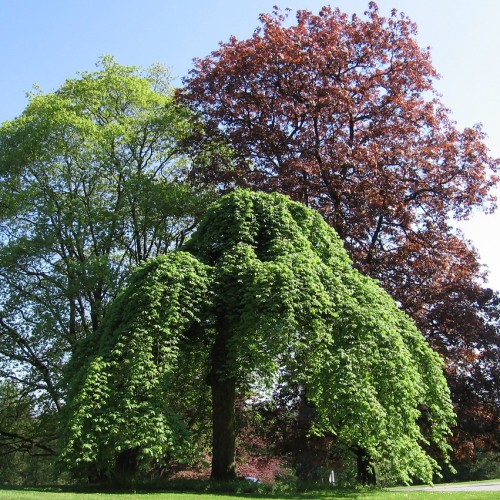
Scotch elm
Ulmus glabra 'Camperdownii'
Cycle:
Perennial
Watering:
Average
Hardiness Zone:
4 - 6
Flowers:
Flowers
Sun:
Full sun
Leaf:
Yes
Growth Rate:
Low
Maintenance:
Moderate
Drought Tolerant:
Yes
Care Level:
Medium
watering
It is important to water Scotch elms regularly. They prefer to stay evenly moist but not soggy. During the growing season, water them thoroughly once a week and check the soil for moisture levels in between, and water as needed. During the winter months, water less often, only when the top inch or 2 of soil feels dry.
sunlight
Scotch elm (Ulmus glabra 'Camperdownii') grows best in full sun and should receive between 6-8 hours of direct sunlight throughout the day. Ideally the tree should be planted in an area with morning sun and afternoon shade. When exposed to direct sunlight, this tree is able to produce the necessary sugars and nutrients needed for healthy growth and development. If the tree is in an area with too much shade, it may not be able to produce an adequate amount of sugars. It is best to place the Scotch elm in an area with direct sunlight so it can reach its full potential.
pruning
Scotch elm (Ulmus glabra 'Camperdownii') should be pruned in late winter or spring, before the beginning of new growth. Pruning should be done judiciously and should focus on removing any dead, diseased, or damaged branches. Pruning should also be done to reduce the size and shape of the tree, as well as to thin the canopy to encourage better air circulation and light penetration. When pruning, it is important to make sure that the cuts are made cleanly in order to prevent diseases from entering the tree. It is best to avoid pruning in summer, as the tree is more vulnerable to disease when it is in an active growth period.
